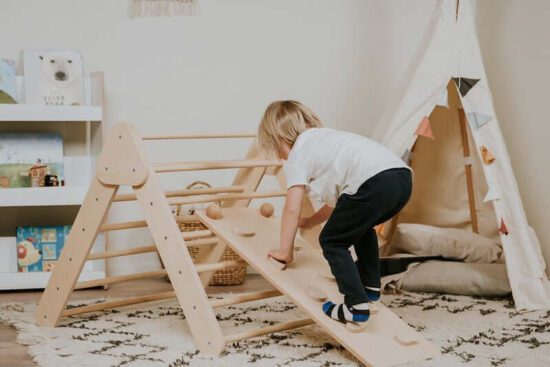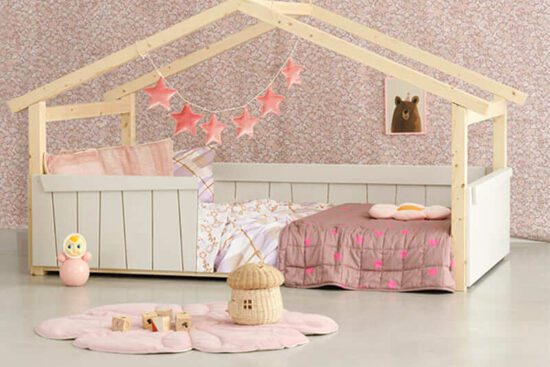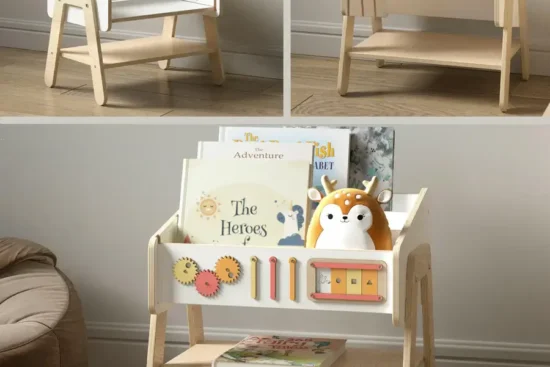Die ersten Schritte eines Babys sind ein bedeutender Meilenstein in seiner Entwicklung und ein Moment großer Freude für Eltern. Doch wie erlangt ein Kind diese Fähigkeit, und wie können wir es dabei unterstützen? Ein fundiertes Verständnis des Prozesses hilft dabei, Babys optimal auf ihrem Weg zum Laufen zu begleiten.
Der Weg zum Laufen: Entwicklungsstufen
Jedes Kind entwickelt sich in seinem eigenen Tempo, doch typische Meilensteine auf dem Weg zum Laufen sind:
- Drehen (ca. 3 bis 7 Monate): Babys beginnen, sich von der Bauch- auf die Rückenlage und umgekehrt zu drehen.
- Robben und Krabbeln (ca. 7 bis 10 Monate): Durch Robben oder Krabbeln erkunden Babys aktiv ihre Umgebung und stärken dabei ihre Muskulatur.
- Sitzen (ab dem 10. Monat): Viele Babys können nun selbstständig sitzen, was ihre Perspektive erweitert und das Gleichgewicht fördert.
- Stehen und Gehen (zwischen 9 und 18 Monaten): Mit Unterstützung ziehen sich Babys hoch, stehen und machen erste Schritte entlang von Möbeln. Schließlich wagen sie freie Schritte.
Vorteile des Kletterns für die kindliche Entwicklung
Klettern spielt eine entscheidende Rolle in der motorischen und kognitiven Entwicklung von Kindern:
- Motorische Fähigkeiten: Klettern stärkt Muskeln, verbessert die Koordination und fördert den Gleichgewichtssinn.
- Selbstvertrauen: Das Erreichen neuer Höhen und das Überwinden von Hindernissen steigert das Selbstbewusstsein.
- Kognitive Entwicklung: Planung von Bewegungen und Problemlösung beim Klettern fördern das Denken.
Die Rolle von Indoor-Klettergeräten
Indoor-Klettergeräte bieten eine hervorragende Möglichkeit, Kindern auch bei schlechtem Wetter oder in urbanen Gebieten ohne nahegelegene Spielplätze ausreichend Bewegung zu ermöglichen. Sie fördern die motorische Entwicklung, stärken die Muskulatur und verbessern die Koordination. Zudem bieten sie Kindern die Möglichkeit, ihre Grenzen auszutesten und Selbstvertrauen aufzubauen.
Integration von Klettergeräten in den Alltag
Indoor-Klettergeräte wie Kletterdreiecke und Kletterbögen bieten eine sichere Umgebung für Kinder, um ihre motorischen Fähigkeiten zu entwickeln. Durch gezielte Bewegungen wie das Hochziehen, das Balancieren und das Klettern lernen Babys spielerisch, ihr Körpergewicht zu kontrollieren und ihren Gleichgewichtssinn zu verbessern.
- Kletterdreiecke: Diese klassischen Montessori-Klettergeräte sind ideal, um Babys erste Stehversuche zu unterstützen. Sie können sich daran hochziehen, sich sicher festhalten und ihr Gleichgewicht trainieren. Viele Modelle bieten zudem eine Rutsche oder Kletterrampe, die das Spielerlebnis erweitert und die Koordination fördert.
- Kletterbögen: Kletterbögen können vielseitig eingesetzt werden – als Stütze beim Hochziehen, als Krabbeltunnel oder sogar als kleine Brücke. Sie laden Kinder dazu ein, verschiedene Bewegungen auszuprobieren, wodurch ihre Muskelkraft und motorische Kontrolle gestärkt wird.
- Balancierbretter und Wippen: Ergänzend zu Kletterdreiecken und -bögen bieten Balanceboards eine hervorragende Möglichkeit, spielerisch den Gleichgewichtssinn zu trainieren. Babys können vorsichtig darauf stehen und kleine Bewegungen ausführen, wodurch sie sich mit dem Gefühl des freien Stehens vertraut machen.
Um die Klettergeräte optimal in den Alltag zu integrieren, empfiehlt es sich, eine sichere und ansprechende Spielumgebung zu schaffen. Ein weicher Teppich oder eine rutschfeste Matte unter den Geräten sorgt für zusätzliche Sicherheit. Eltern können ihre Kinder ermutigen, spielerisch neue Bewegungen auszuprobieren, ohne sie zu drängen. Wichtig ist es, das Baby in seinem eigenen Tempo entdecken und lernen zu lassen.
Regelmäßige Klettereinheiten, die in den Tagesablauf integriert werden, helfen dem Kind, sich kontinuierlich weiterzuentwickeln. Eltern können beispielsweise morgens nach dem Aufwachen oder nachmittags als Teil der Spielzeit eine kurze Klettereinheit einplanen. Durch das spielerische Herantasten an neue Bewegungsmuster wird das Baby ermutigt, selbstbewusst und sicher seine motorischen Fähigkeiten weiterzuentwickeln.
Fazit
Das Erlernen des Laufens ist ein individueller Prozess, den Eltern und Pädagogen durch Verständnis, Geduld und geeignete Hilfsmittel unterstützen können. Indoor-Klettergeräte fördern nicht nur die motorische Entwicklung, sondern auch das Selbstvertrauen und die Freude an Bewegung.




